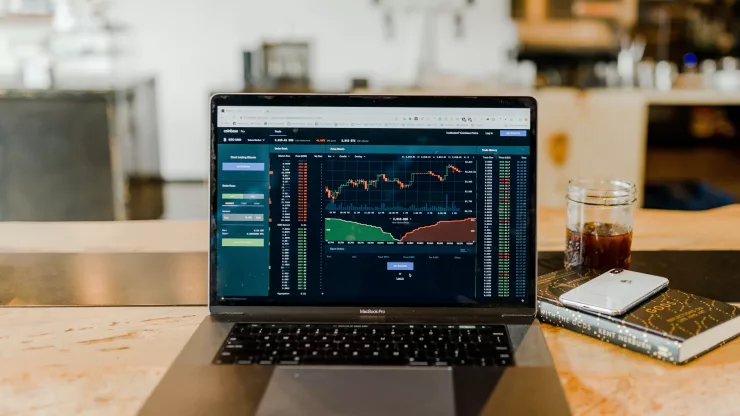Investing in Renewable Energy 101: A Beginner’s Guide
As the world’s population continues to grow, so does our need for energy. Unfortunately, our current energy sources are not sustainable and are causing irreparable damage to the environment.
The solution? Investing in renewable energy.
In this article, we’ll break down everything you need to know about investing in green energy for beginners.
Jump to Section
Why Investing in Renewable Energy Is Crucial for Our Future
Traditional energy sources, such as fossil fuels, are finite and will eventually run out.
In addition, they produce harmful emissions that contribute to climate change. Renewable energy, on the other hand, is sustainable and produces little to no emissions.
By investing in renewable energy, we can reduce our carbon footprint and ensure a cleaner, healthier future for generations to come.
What Is Renewable Energy?
Renewable energy is energy that is derived from natural, renewable resources that are replenished over time. These resources include sunlight, wind, water, geothermal heat, and biomass.
Definition and Examples
Renewable energy is any type of energy that comes from a source that can be replenished naturally over time. Examples of renewable energy include solar, wind, hydro, geothermal, and biomass.
How Does Renewable Energy Work?
Renewable energy works by harnessing natural resources and converting them into usable energy. For example, solar panels capture sunlight and convert it into electricity, while wind turbines use wind to generate power.
Benefits of Investing in Renewable Energy
Investing in renewable energy has numerous benefits, including:
Environmental Benefits
Renewable energy produces little to no emissions, which means it does not contribute to climate change or air pollution. It also does not produce harmful waste products, such as nuclear waste.
Economic Benefits
Renewable energy is becoming increasingly cost-competitive with traditional energy sources. In addition, investing in renewable energy can create jobs and stimulate economic growth.
Social Benefits
Renewable energy can provide energy access to remote or underdeveloped areas that do not have access to traditional grid systems. It can also improve energy security by reducing reliance on foreign oil.
Types of Renewable Energy Sources
There are several types of renewable energy sources, including:
Solar Energy
- Photovoltaic (PV) systems
- Concentrated Solar Power (CSP) systems
- Solar Water Heating (SWH) systems
Wind Energy
- Onshore wind turbines
- Offshore wind turbines
Hydro Energy
- Run-of-the-river hydroelectric systems
- Pumped-storage hydroelectric systems
Geothermal Energy
- Direct-use geothermal systems
- Geothermal heat pumps
Biomass Energy
- Wood and wood waste
- Municipal solid waste
- Landfill gas
Factors to Consider When Investing in Renewable Energy
When considering investing in renewable energy, there are several factors to take into account, including:
Cost of Installation and Maintenance
The upfront cost of installing renewable energy systems can be high, but over time, the cost savings on energy bills can offset the initial investment. Maintenance costs should also be taken into consideration.
Relative Table:
| Type of Renewable Energy | Installation Cost | Maintenance Cost |
|---|---|---|
| Solar Energy | $15,000 – $40,000 | $100 – $1,500 per year |
| Wind Energy | $48,000 – $65,000 | $1,000 – $5,000 per year |
| Hydro Energy | $1,000 – $10,000 per kW | $1,000 – $5,000 per year |
| Geothermal Energy | $2,500 – $7,500 per ton of capacity | $50 – $100 per year |
| Biomass Energy | $3,000 – $8,000 | $50 – $100 per year |
Availability of Resources
Renewable energy sources may not be equally available in all areas. For example, solar energy is more abundant in sunny areas, while wind energy is more abundant in areas with high wind speeds.
Relative Table:
| Type of Renewable Energy | Availability of Resources |
|---|---|
| Solar Energy | Sunny areas, little to no shading |
| Wind Energy | Areas with high wind speeds, little to no turbulence |
| Hydro Energy | Areas with moving water, such as rivers, streams, and oceans |
| Geothermal Energy | Areas with geothermal heat, such as hot springs or geysers |
| Biomass Energy | Areas with an abundant supply of biomass, such as forests or agricultural waste |
Energy Efficiency
Investing in energy-efficient appliances and practices can reduce energy consumption and make renewable energy systems more effective.
Reliability
Renewable energy sources may be less reliable than traditional energy sources, especially if weather conditions are not favorable. Backup power systems may be needed in some cases.
Government Incentives for Investing in Renewable Energy
Governments around the world offer incentives for investing in renewable energy, including:
Tax Credits
- Investment Tax Credit (ITC)
- Production Tax Credit (PTC)
Grants and Loans
- Rural Energy for America Program (REAP)
- Energy Efficiency and Conservation Block Grant (EECBG)
Renewable Portfolio Standards
- Renewable Portfolio Standards (RPS) mandate that a certain percentage of energy must come from renewable sources.
Common Misconceptions About Renewable Energy
There are several common misconceptions about renewable energy, including:
It’s Too Expensive
While the upfront costs of renewable energy systems can be high, the long-term cost savings on energy bills can offset the initial investment.
It’s Not Reliable
Renewable energy sources can be less reliable than traditional energy sources, but backup power systems can help mitigate this issue.
It’s Only for Developed Countries
Renewable energy can be beneficial for both developed and developing countries, especially in areas without access to traditional grid systems.
It’s Not Profitable
Investing in renewable energy can create jobs and stimulate economic growth. In addition, the increasing competitiveness of renewable energy sources makes them a profitable investment.
Why Investing in Renewable Energy Is a Win-Win Situation
Investing in renewable energy is a win-win situation for the environment and the economy. It reduces our carbon footprint and promotes a cleaner, healthier future, while also creating jobs and stimulating economic growth.
FAQ
What is the most common type of renewable energy?
The most common type of renewable energy is solar energy.
How much does it cost to install a renewable energy system?
The cost of installing a renewable energy system varies depending on the type of system and the location, but it can range from a few thousand dollars to tens of thousands of dollars.
Are there government incentives for investing in renewable energy?
Yes, many governments offer incentives for investing in renewable energy, including tax credits, grants, and loans.
Is renewable energy reliable?
Renewable energy sources can be less reliable than traditional energy sources, especially if weather conditions are not favorable. Backup power systems may be needed in some cases.
Is investing in renewable energy profitable?
Investing in renewable energy can create jobs and stimulate economic growth. In addition, the increasing competitiveness of renewable energy sources makes them a profitable investment.

With a deep passion for personal development, Ben has dedicated his career to inspiring and guiding others on their journey towards self-improvement.
His love for learning and sharing knowledge about personal growth strategies, mindfulness, and goal-setting principles has led him to create My Virtual Life Coach.
Contact Ben at [email protected] for assistance.




